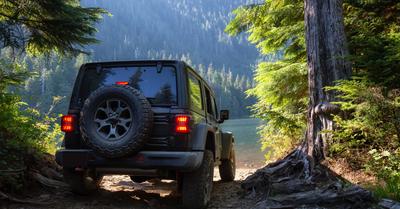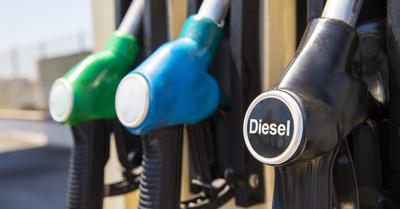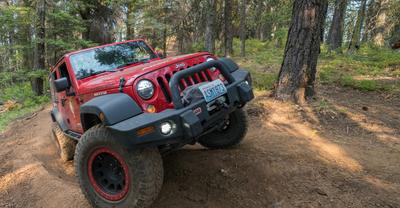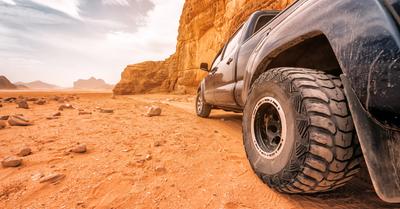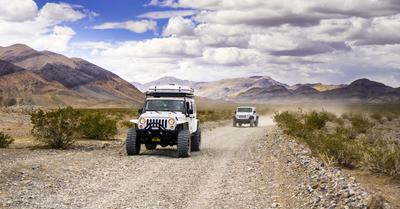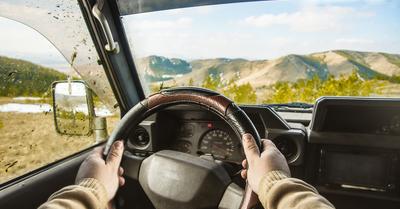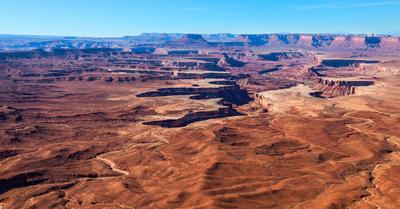The key to getting the most from your vehicle with off-road driving is a reliable off-road suspension that works well in creating better performance.
The exact way an off-road suspension works depends on the type. The most popular option on off-road vehicles is a dependent system that uses a solid axle with leaf springs to absorb shocks and bumps on rugged terrain. Between these springs, a sway bar holds the vehicle with stability.
Off-road suspensions are designed for a specific use, and depending on the type of suspension you use it will target shocks and bumps from the terrain to stay balanced and comfortable. You can consider the different factors that make up an off-road suspension and pick the features you need most.
As someone new to off-road driving and the suspension setups that make it possible, the terminology can be confusing. We have created this guide to simplify everything and teach you more about off-road suspension to help you find the best setup for your vehicle.
This article may contain affiliate links where we earn a commission from qualifying purchases.
How Off-Road Suspension Works
Off-road suspension is made for off-road vehicles. It provides an adjustable ride height, and it can be adjusted from inside the cabin. This type of suspension can be found on many heavy-duty vehicles, and it also provides a smoother ride for the passengers.
The basic idea behind how off-road suspension works is to make the suspension behave in a way that is more suitable for off-road driving. The suspension system on an off-road vehicle is designed to be stiffer than one on a typical car, and it’s also designed to absorb more of the bumps, dips, and shocks of driving on unpaved surfaces.
Off-road suspensions are used in various types of vehicles. The system is made up of springs, dampers, and shock absorbers. The suspension has to be able to absorb the vertical motion so that the vehicle does not bounce around on uneven terrain.
What Makes a Good Off-Road Suspension?
The suspension is one of the most overlooked and underrated parts of a car. It's the only part of the vehicle that touches the ground and it's responsible for providing a comfortable ride.
But what makes a good suspension? A good suspension will provide stability, control, and comfort. Below are some of the primary factors that make a suspension so reliable for off-road driving.
Axle
The axle is essentially the primary part of nearly every single suspension system for off-road driving. It plays a determining role in the durability and performance of your vehicle by balancing the different moving parts together to keep the vehicle running smoothly.
The exact type of axle used will vary based on the suspension system, but it is common to see a solid axle design that uses coils or springs of some kind. This design is known to work as both a dependent and independent system.
You should always keep an eye on the axle in your vehicle and be sure it is treated properly to maintain the performance and overall balance of your vehicle.
Caster
The caster will affect how your steering returns itself to the center when driving off-road. It is important to keep in mind that if you are crossing over rough terrain, you need to make sure the caster is turned off because there are chances of damage to your steering mechanism.
A caster is a wheel alignment function that affects the steering response of your car. It allows you to put your vehicle to the test on rugged terrain because it can absorb different bumps or shocks from the road while remaining in control.
Beams
A suspension system is designed to support the weight of a vehicle while allowing it to move more smoothly. The beams are located in a suspension system with overlapping to hold key parts into place, and they assist with off-road driving by absorbing some of the shocks from uneven terrain.
The beams are designed to provide a secure and stable ride. For example, the TTB system uses two beams at the front of the suspension system and vehicle. This allows it to move independently to allow the vehicle maximum control through its movements.
Springs
The springs help with body roll, which is when the vehicle rolls about its axis. The suspension helps with this by moving up and down, like a see-saw. It also helps with shock absorption by absorbing any shocks between the wheels and the ground.
For the springs to function as they should, they need to be inserted into the right type of shock absorbers. For this to work, the springs must be made as close as possible to the same size and shape as the shock absorbers.
The springs used in a reliable suspension system will come from many different types of materials. It is important to remember that when your suspension has a high spring rate, it will ride much stiffer.
Types Of Off-Road Suspensions
Different types of off-road suspensions can be seen on a variety of vehicles. Some of these suspensions can be found on large trucks and some can also be found on cars.
You can either upgrade your current suspension to one of these or you already have these suspensions on your vehicle and you can use this guide to identify the exact one to determine if it is the right one that you need for your desired driving.
Solid Axle With Leaf Springs
The dependent solid axle with leaf springs off-road suspension is considered a more traditional system in many vehicles because of the design and its overall functionality. It uses a solid axle with a set of leaf springs that can help with connecting the wheels laterally.
When this is done, it allows them to move together in unison so your vehicle is much more accurate on rugged and difficult off-road terrain. The leaf springs are then used again in the frame of the vehicle suspension to connect to the axle housing.
The dependent system ultimately relies on a bar to be securely mounted at the right angle to hold together the axle from each side. This works precisely and it will stop the body from rolling for more control.
Solid Axle With Coil Springs
This off-road suspension system is one of the most functional suspensions for off-road vehicles. It is a dependent suspension system that has coil springs to provide excellent damping performance and flexibility.
It has less friction than other systems because it does not use heavy springs or telescopic shock absorbers. This results in less wear and tear on the parts, which causes them to last longer.
It is built similarly to the leaf spring design, however, the coil springs will replace the leaf springs in an attempt to create a smoother driving experience with a more compact suspension design for your vehicle.
Independent Front Suspension (IFS)
The suspension system is a crucial part of any vehicle. This suspension system is entirely independent and works by allowing the front wheels to move independently with a set of tools like a torsion bar or coil strut to make it happen.
An independent front suspension off-road suspension system has independent springing and damping. They are usually installed on all-terrain vehicles and they have excellent shock absorption capabilities.
The independent front suspension off-road suspension system gives the driver many advantages that can result in better driving conditions for them and also greater control over the vehicle.
Twin-Traction Beam (TTB)
A twin-traction beam suspension system combines features from both the dependent and independent off-road suspension systems. This design distributes the weight of the vehicle more evenly than the traditional beam axle suspension.
The design is simple and it mounts a pair of beams at the front of the vehicle that can consistently pivot on each end to allow for added balance and overlapping too. The independent movement makes this such an effective system.
This suspension also includes an independent hydraulic shock absorber on the other side of the car that is connected to the main shock absorber by a second lever arm. The twin-traction beam offers improved off-road performance with better traction, high ground clearance, and increased wheel travel.
How To Pick The Right Off-Road Suspension Setup
The right off-road suspension setup is the key to getting the most out of your vehicle. Whether you are driving through sand, rocks, or even pavement it is important that your suspension can handle any terrain.
An important part of this setup is understanding what type of requirements your vehicle needs to accommodate. This will help you determine what the best off-road suspension setup is for your specific vehicle and driving situation.
On-Road Driving Needs
Off-road suspension systems are typically required for vehicles that are used off the pavement and also to provide better performance on the pavement. However, you also need to consider the style of driving your vehicle will experience on the pavement.
The suspension system is one of the most important parts of your vehicle. It ensures that you have a safe and comfortable ride even in off-road conditions. The way you drive on changing terrain determines the best fit for your vehicle.
You should consider your on-road driving needs when choosing the best off-road suspension system for your vehicle too.
Tire Size
Tire size impacts the suspension and overall vehicle performance for a few key reasons, especially when you are driving off-road. The most obvious reason is that larger tires tend to have a wider tread profile so it will change the way to handle bumps or rugged areas.
The other reason is that they add more weight and torque to your vehicle and the way it will drive. This changes the way your suspension reacts to movements with your vehicle, causing it to both perform and wear down in different ways.
It is possible that oversized tires could also cause your suspension to deteriorate faster because of the way it will cause your vehicle to handle bumps. You should seriously consider tire size when discussing off-road suspension.
Vehicle Type
Vehicle type will play a huge role in the suspension setup that you need to get the best off-road driving. For example, if you drive a truck, then you might need a higher suspension to clear rocks and dips in the road.
Off-road suspension setups are designed for specific vehicle types. These systems can be costly but provide excellent performance for off-roading enthusiasts who want to get their vehicles to higher performance levels.
Ground clearance and load capacity are both key factors that can be impacted by vehicle type too. Always remember to consider these when upgrading and using your off-road suspension.
Acceleration & Speed
Off-road suspension is an essential part of any off-road vehicle. It is important to have both acceleration and speed when it comes to off-road suspension.
Some designs are better at handling these speeds than others, but in general, the best designs are ones that can maintain stability while still being able to handle rough terrain.
The design should also not only be able to handle high speeds but also be capable of maintaining stability at low speeds. These suspensions are designed to be durable and withstand tough terrains like sand or mud too.
Independent Suspension Vs. Dependent Suspension
All off-road suspension systems operate either independently or dependently, so it is critical to understand the key differences between the two if you want to know how off-road suspension works.
There are benefits to both types of suspensions, but the independent suspension can provide a bit more durability and performance when handling difficult terrain. You will notice that your vehicle handles more precisely too.
Independent Off-Road Suspension
An independent off-road suspension is a type of suspension that is self-supporting and allows the wheels to move separately, unlike the traditional on-road leaf spring suspension. This type of suspension is generally used in off-road vehicles which need advanced control.
This type of system includes a mechanism to adjust the height and compression of the suspension during travel. This makes it one of the more versatile suspension systems, as it can be tuned for different types of terrain and load.
The reason this system offers more versatility than some other systems is that it utilizes two sets of springs on either side. This means that each set of springs can be adjusted independently from one another to allow for adjustments to things like compression and load capacity.
With an independent suspension, you can create a stronger connection between the wheels and the axle with added versatility too.
Dependent Off-Road Suspension
A dependent off-road suspension system uses a solid axle that goes directly across the frame of the vehicle, forcing the wheels to move together. They do not have the same free movement as an independent system can provide.
This means that when you turn sharply and one side of the system bends, the other side will do the same. While this may not sound good, it holds up extremely well on rough terrain and over bumps. This system has excellent shock absorption too.
However, you will notice far less driving comfort with this suspension system. The movement of the vehicle is too dependent so it leads to less natural movements, causing rides to be bumpier and less forgiving.


